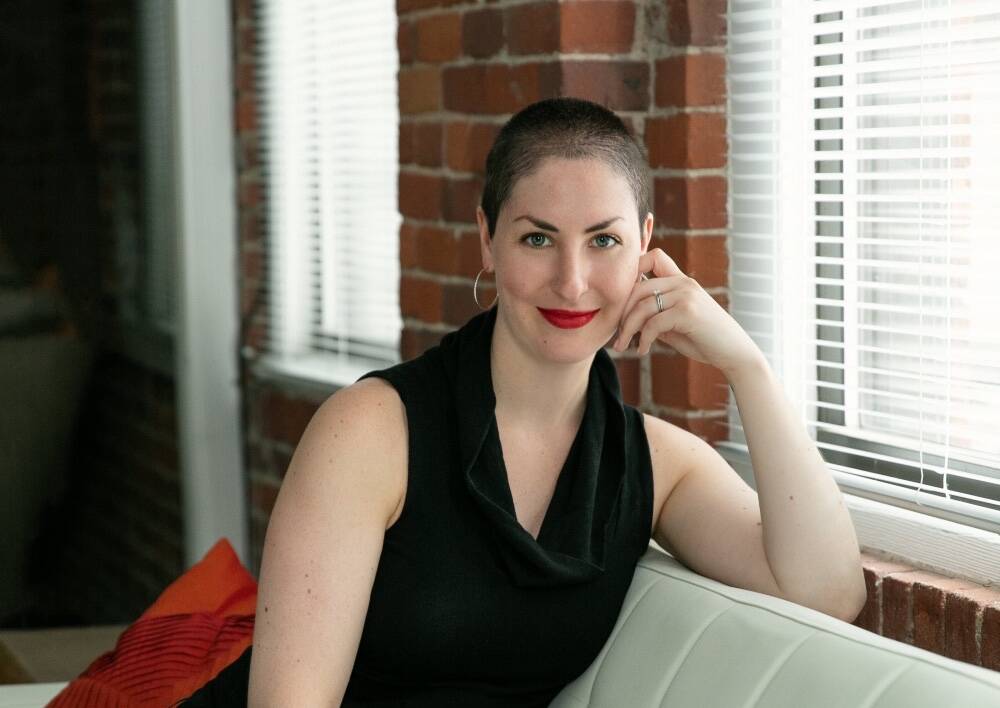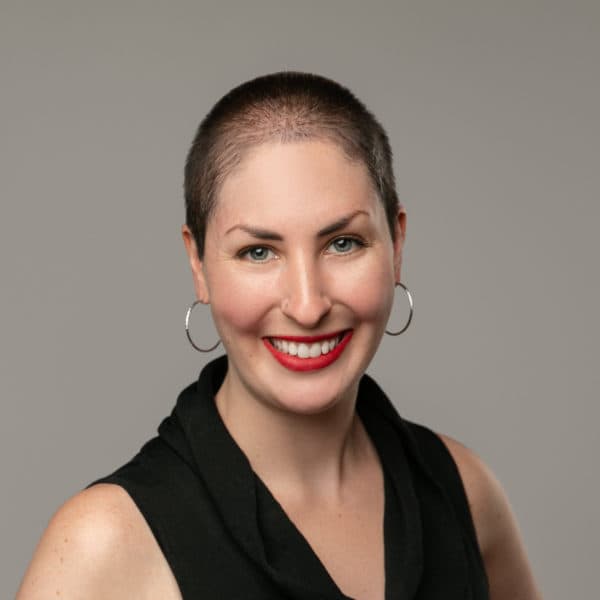Advertisement
Commentary
My buzz cut is more than a shaved head

Sinéad O’Connor will be remembered for many things — her political activism, courage and beautiful voice. For me, though, one part of her legacy is especially meaningful.
Her badass hairstyle.
Like Sinéad, I’ve been shaving my head for years. This did not start off as a fashion choice. Since the age of 8, I have struggled with a mental health condition called trichotillomania, a compulsive hair pulling disorder that affects 3% of the population. Shaving my head was a last-ditch effort to stop my behavior. I wore wigs and prayed that, eventually, my hair would grow back and my urges to pluck would subside. Few people knew about my disorder, and no one saw my shaved head. It felt like a mirror of my shame.
In my early 20s, a therapist challenged me to spend an entire day out in Boston, wigless. The night before the outing, I dry-heaved over the toilet, paralyzed by fear. Would people stare? Laugh at me? Turn away in disgust?
Over time, my buzz cut has evolved from an act of despair to one of empowerment.
None of those things happened. If anything, people were friendlier toward me, as if responding to a shift in my energy. I wore a sequined aqua top and hoop earrings that sparkled in the late-afternoon sun. Each gust of wind sent tingles across my bare scalp. Strutting down the aisles of my favorite bookstore, I beamed at strangers and gushed with employees about books. Instead of feeling exposed, I felt more like myself. Checking out my reflection in storefront windows made me smile. It was like I was seeing myself for the first time.
I began wearing my shaved head out in public more and more. Going wigless changed my style. I gravitated toward bright colors, loud prints, big earrings that made noise when I walked. My personality changed, too. Without anything to hide behind, my silly, carefree attitude from childhood bubbled to the surface. I never stopped pulling out my hair, but I no longer felt the need to grow it back. Instead, I collected photos from the internet of other women rocking buzz cuts: Natalie Portman, Kristen Stewart and, of course, Sinéad O’Connor.
Advertisement
In her memoir, Sinéad writes about the first time she buzzed her head. She was 20, and working on her first album, when a record executive told her to grow out her hair and start dressing more like a girl. The next day, she went to a barbershop and asked the man there to make her “look like a boy.” Shaving her head was an act of defiance, an attempt to claim agency over her body and identity.
Sinéad’s and my buzz cut have different origins. Hers was about rebellion; mine, desperation. And yet, over time, my buzz cut has evolved from an act of despair to one of empowerment. Shaving my head allows me more control over a compulsion that once dominated my life. Practically speaking, without the need for styling and shampooing, getting ready in the morning really does take less time — plus, I don’t have to spend money on haircare products.
More importantly, my buzz cut allows me to live on my own terms. No longer captive to restrictive beauty norms, I spend a lot less time worrying about how I look, and more time considering how to be a better friend, partner and citizen. Having an edgier look has made me bolder in general. I speak my mind, stand up for others and have better self-esteem than when I wore wigs — or even back when I had long hair. Without hair to hide behind, I feel freer, more seen.
Without hair to hide behind, I feel freer, more seen.
Unlike Sinéad, I don’t shave my head to send a message. Rather, it’s the only version of me that feels whole. I know some people may read my buzz cut as a statement. This makes me wonder if any neutral forms of visibility actually exist for women. While I’ve never personally faced harassment, I know other women with buzz cuts who’ve been heckled, usually by men. The comments I receive are almost always kind. People love to compliment the shape of my head. Women often tell me they wish they could shave their heads, but that they could never pull it off. To which I always respond with the same question: Why the hell not?
As I read tributes to Sinéad’s life, I am reminded of the importance of small acts of power. Sinéad’s hairstyle was far from her boldest move — she created the most change with her words and deeds. But we can’t underestimate the impact of a woman claiming her right to her own body. This was radical back in the 1980s, when Sinéad first shaved her head. Unfortunately, with women’s bodies and rights still under attack, it remains radical today. Claiming agency is a political act for women — whether we intend it or not. Maybe it’s time for me to embrace my buzz cut as my own small rebellion.
In an appearance on “Dr. Phil” in 2017, Sinéad said, “I don’t feel like myself unless I have my hair shaved. So even when I'm an old lady, I'm going to have it.” I wish Sinéad had lived long enough for us to see that — an old woman rocking her buzz cut, feeling like herself. I wish I could tell her: Me, too, Sinéad. Me too.
